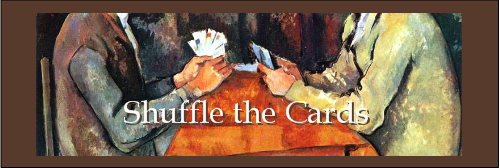To get in the Christmas spirit, I bought a nice holiday sweater. I was hoping for something with reindeer and snowmen on it, but as Pilar told me, "You won't find that in Spain."

Most of the other assistants from our school left early. Emma and Carmen went home last week and Tamara left yesterday morning. Cody, Jacqui, and I are the only ones still here. Of our other friends, Kevin went to Morocco for the break, Liz went to Mexico with her family, James went home to England, and Priscilla went to Puerto Rico. This Sunday, we all got together before everyone parted and found a new restaurant in Alcalá. It was more expensive than where we usually eat, but the place was very cozy and the food was great. They gave us some tapas of olives and manchego cheese. For my first course I had Pote Gallego (a soup from the northwest of Spain consisting of potatoes, ham, veal, and spinach). For the second course it was a French dish of pork medallions in a Roquefort sauce with dried currants.
Last Friday we had a Christmas dinner at the school. We followed along with Spanish tradition and went to a bar for tapas before the meal with the teachers (lunch is the biggest meal of the day in Spain). We walked back to the school where the meal started with some tapas of sliced Serrano ham, shrimp in garlic sauce, and caviar on toast. We then had our first course, a bisque made from crab. For the second course I had fish. I'm not sure what kind of fish it was, and none of the teachers knew for sure, but it was very good. It was served whole (head and all, plus a very mean-looking set of teeth which made some assume it was in the piranha family). For dessert was tiramasu. Stangely enough for a school (but not for a Spanish school) beer, wine, cider, and cava were served. Afterwards, we all went to an Irish pub for a few hours.
At school, the children had been preparing for their Christmas Pageant which was held this Monday during school. All week they were practicing songs, they were singing songs in both English and Spanish. Some of the songs were "Good King Wenceslaus," "We Wish You a Merry Christmas," "Jingle Bell Rock," "Merry Christmas (War is Over)," and songs from Spain such as "Los Peces en el Rio" and "Veinticinco de Diciembre."
Yesterday was the last day of school before break. Cody dressed as (Elvis) Santa Clause and visited several classes (third to sixth grades):

The younger kids were visited by the Three Kings (or Reyes Magos), the traditional gift-giving figures of Spain. In recent years, the figure of Santa Clause (or Papa Noel) has entered Spain due to the influence of American culture. Other regions of Spain have some strange gift-bearing figures which are little-known beyond their borders. The Basque Country has the giant, Olentzero, who comes down from the mountains on Christmas Eve. He drinks a magic liquor which makes him shrink to fit down chimneys. In order to keep their kids asleep, parents claim Olentzero will cut their throats if he catches them awake. In Catalonia, the yule log takes a unique form as Caga Tió (Catalan for "poop log"). This is an actual log which is "fed" through the month of December at the dinner table. On Christmas Eve, it is covered with a blanket as the children beat it with sticks and sing for it to "poop them something nice." In the morning hazelnuts and candy will be found under the blanket behind the log. Catalonia has another odd tradition which has spread through Spain recently. This is the "caganer," a squatting figurine placed in the back of Spanish nativity scenes. This is meant to signify the profane in contrast with the holy. I bought one of these figures along with the Three Kings.
Jacqui, Pilar, and I went along with Cody from class to class. The younger kids were more excited and sang their Christmas songs for us. When Cody asked them what they wanted for Christmas, most of them, put on the spot, turned red and said, "No sé" ("I don't know"). One kid asked for peace and others made a safe generalization with the reply, "toys." (The music teacher, Arturo, wrote on the board, "Mr. Santa, I would like second prize in the lottery. As you see, I don't ask for much, only a little.") When asked if naughty or nice, most kids replied, "yes." The older kids weren't as excited and some brought up the school newspaper and pointed to Cody's picture, claiming, "This is you!" One kid asked, "Santa, it is true that boys and girls must be nice to get presents, but have you been nice?"
When we finished the tour of classes, Cody and I helped the gym teachers take down the stage used for both the pageant and a play about the Three Kings put on by a local theater company. The kids were still there when we arrived, getting autographs from the actors. When they saw Cody and I, they asked for our autographs as well.
After school, Cody, Jacqui, and I went to El Baserri and had lunch. I got chorizo in wine and a plate of eggs and blood sausage, seen here:

I have been planning some trips for the break (in addition to the Italian one over New Year's) and beyond. This week, as I have no school or tutoring, I will likely visit Madrid and some other places nearby. More to come soon!





















































